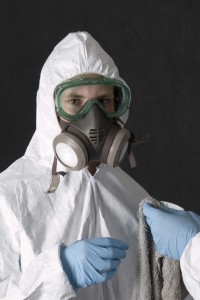Mold has already established its quarter-hour of fame during the last few yrs. Although hype has passed away down, mold is an important issue still. Customer complaints require house builders to possess a fast action strategy; both to completely clean up the mold issue also to show customers an excellent home builder is shopping for their safe practices and the durability of these home.

Mold has already established its quarter-hour of fame during the last few yrs. Although hype has passed away down, mold continues to be a significant issue. Customer issues require house builders to possess a fast action strategy; both to completely clean up the mold issue also to show customers an excellent home builder is shopping for their safe practices and the durability of these home.
There are two considerations to remember in relation to mold: prevent it by doing things best the first time so when you do face mold, look after it immediately. Making certain your warranty group follows an activity for mold remediation will need treatment of the latter.
The following steps offered by Cleveland Master of Disasters, serve as a basic process for remediating mold problems quickly.
Learn about moisture
Assessing mold growth entails more than just considering what's visibly growing about the walls or inside a corner. Mold is definitely an invisible intruder, growing behind and around everything you see first. Such devious conduct requires inquisitive thinking. Initial, recognize that behind all mold development is a drinking water or moisture problem. Second, turn into a master of dampness - know where moisture originates from and how it enters the home. The best goal of the two steps will be for warranty representatives to recognize a moisture resource and use its area to greatly help locate all mold development, not only what's immediately visible.
Document the mold issue and develop a remediation plan
Before starting remediation, document the mold situation with writing, video and photos. The warranty group supervisor use the documentation to build up a remediation plan, which answers queries like when work will be slated to begin typically, when that ongoing function is scheduled to become completed, who will be carrying out the remediation, any screening that needs to be done, and when homeowners will undoubtedly be relocated temporarily. In the long run, the documentation might help manage liability for the company or indicate bigger trends in mold development.
Remediate mold contamination
Remediation may always involve clearing up existing mold even though avoiding contact with oneself and also homeowners, and also preventing new development by addressing the dampness source. Predicated on your calculation of the contamination region, determine if you are working in a location around 30 square feet (around the size of a complete sheet of drywall). If that's the case, you'll be following a guidelines for remediation amounts 1 and 2. Degree 1 remediation can be used for little, isolated regions of mold around 10 square ft and Degree 2 remediation addresses square footage from 10 to 30 square ft.
· Repair the water issue. This will assist in preventing fresh mold spores from developing.
· Isolate the contaminated region. Close all windows and doors between your contaminated area along with other rooms of the house for both levels. For Degree 2 remediation, also cover up all doorways and any openings with 6 mil polyethylene sheeting. Seal all seams of the sheeting with duct tape and slide openings in the sheeting to enter the contaminated region.
· Suppress dust. Do that by misting the contaminated places.
· Remove materials. Eliminate all wet and mold-damaged porous materials.





